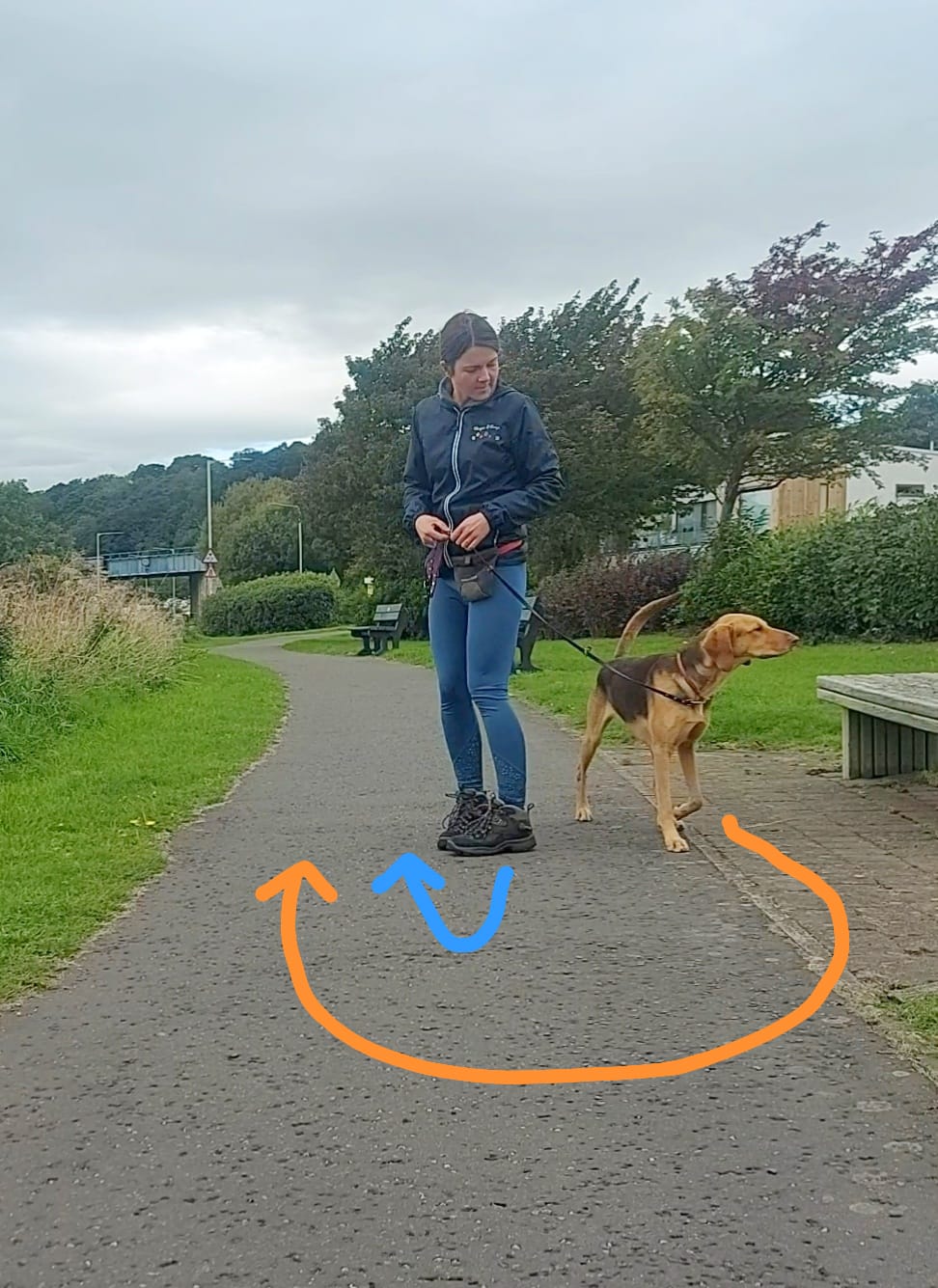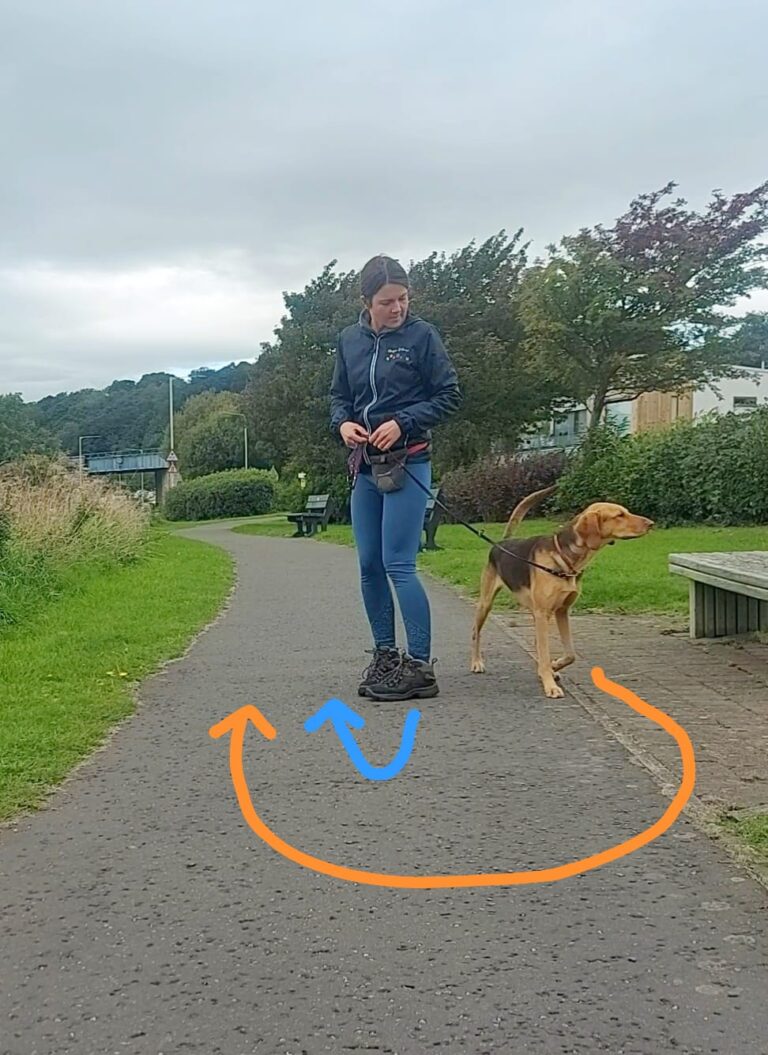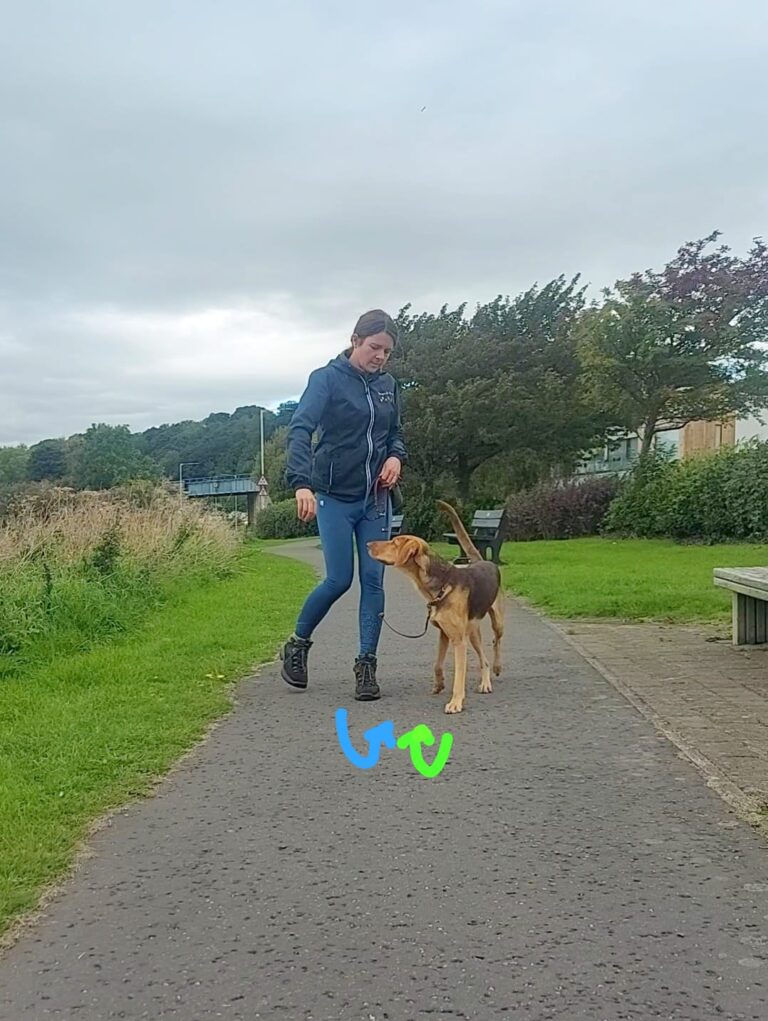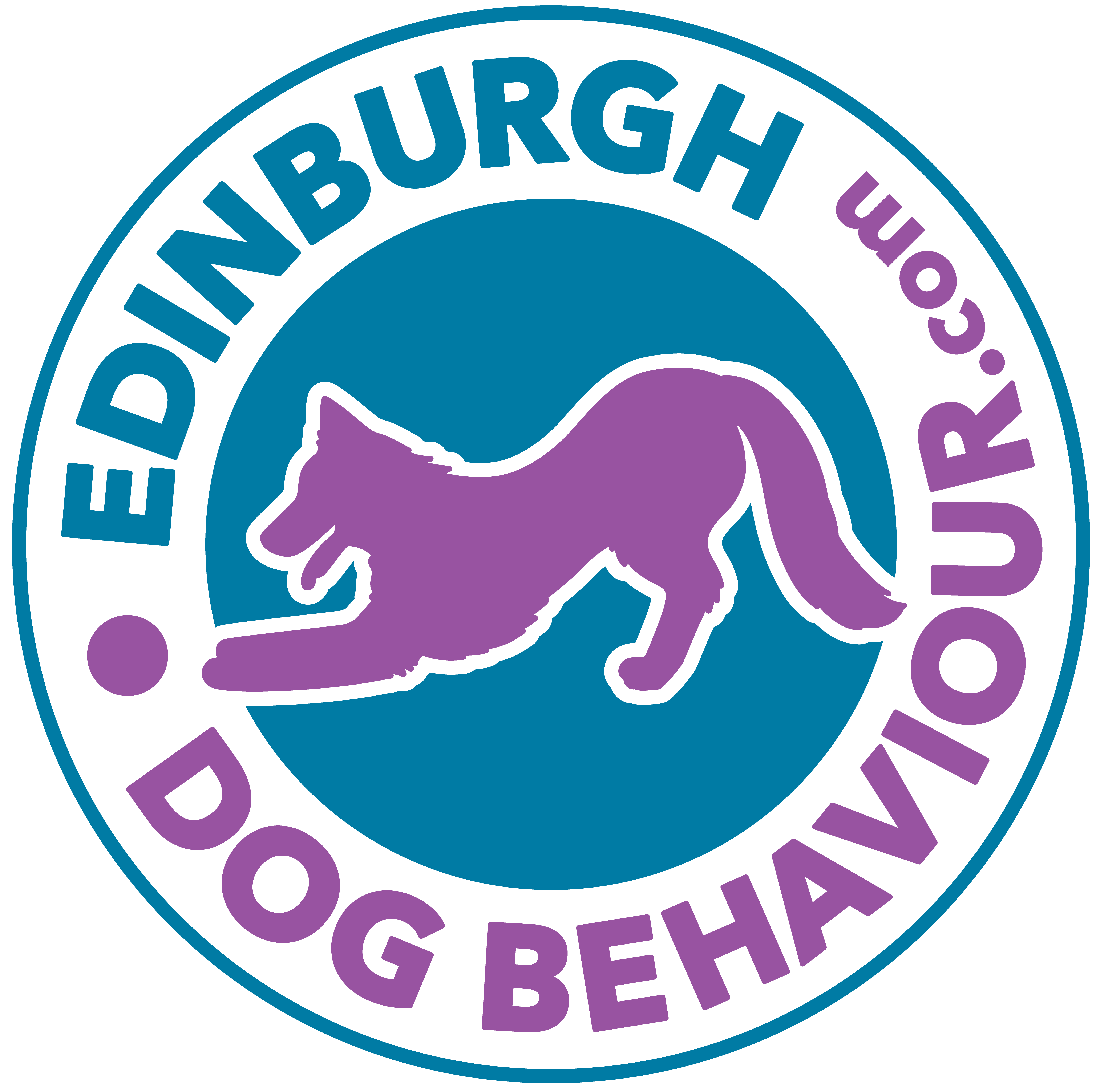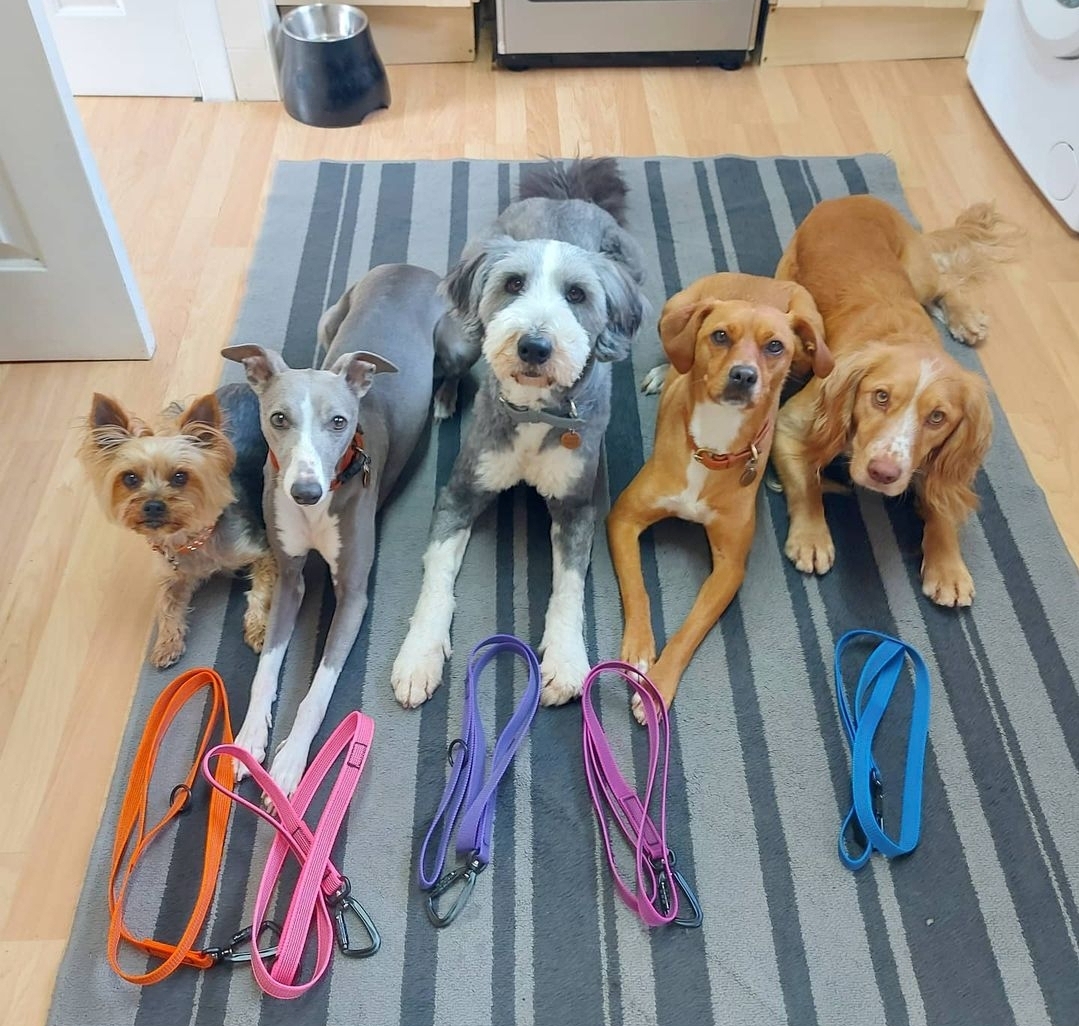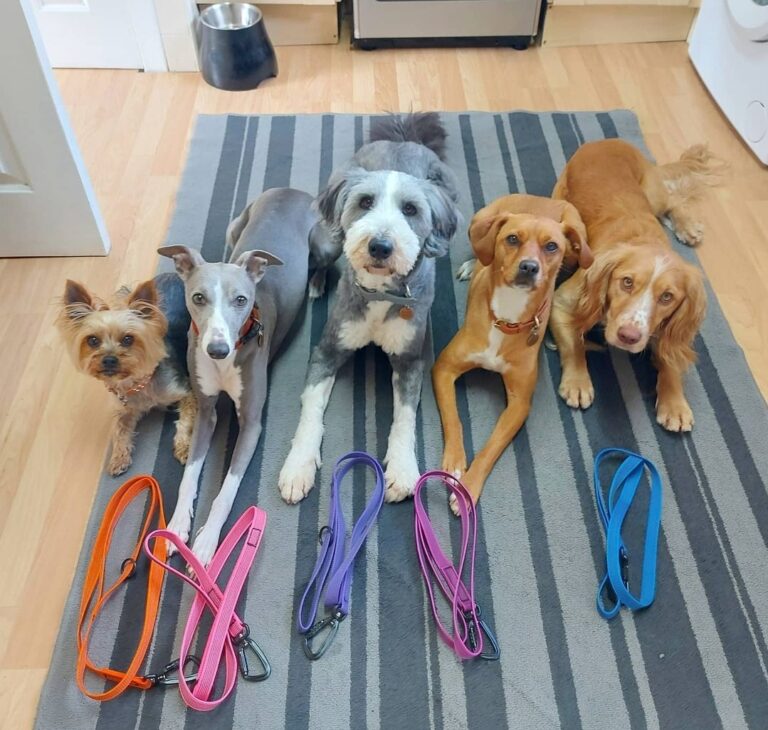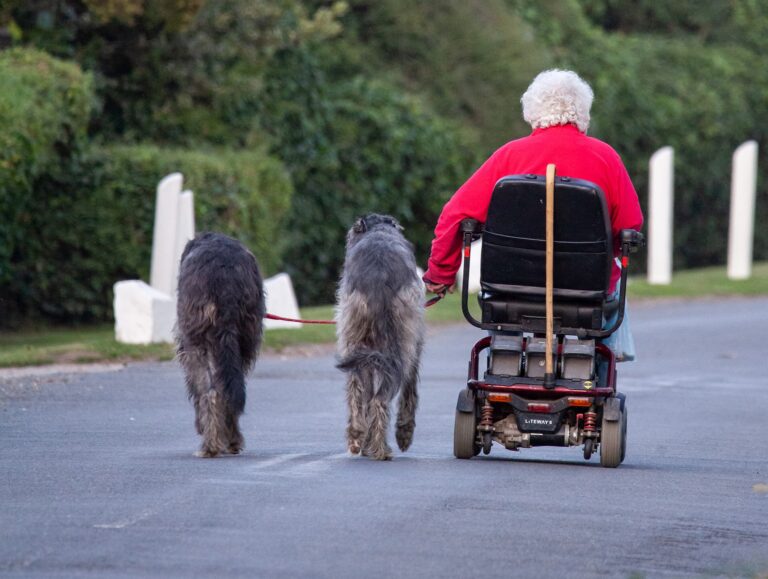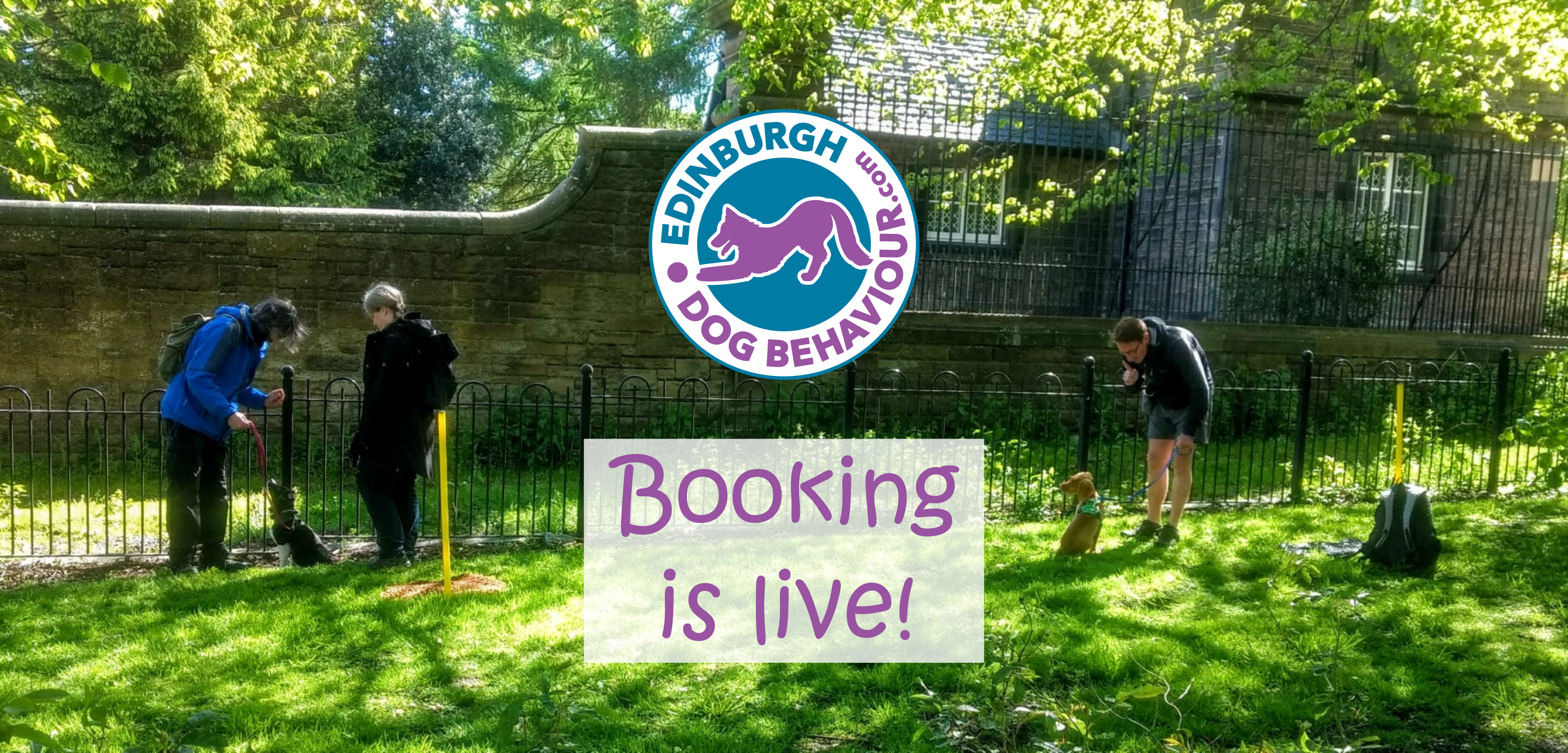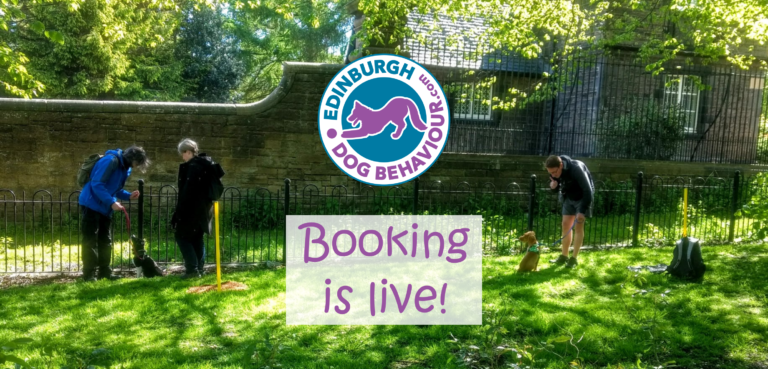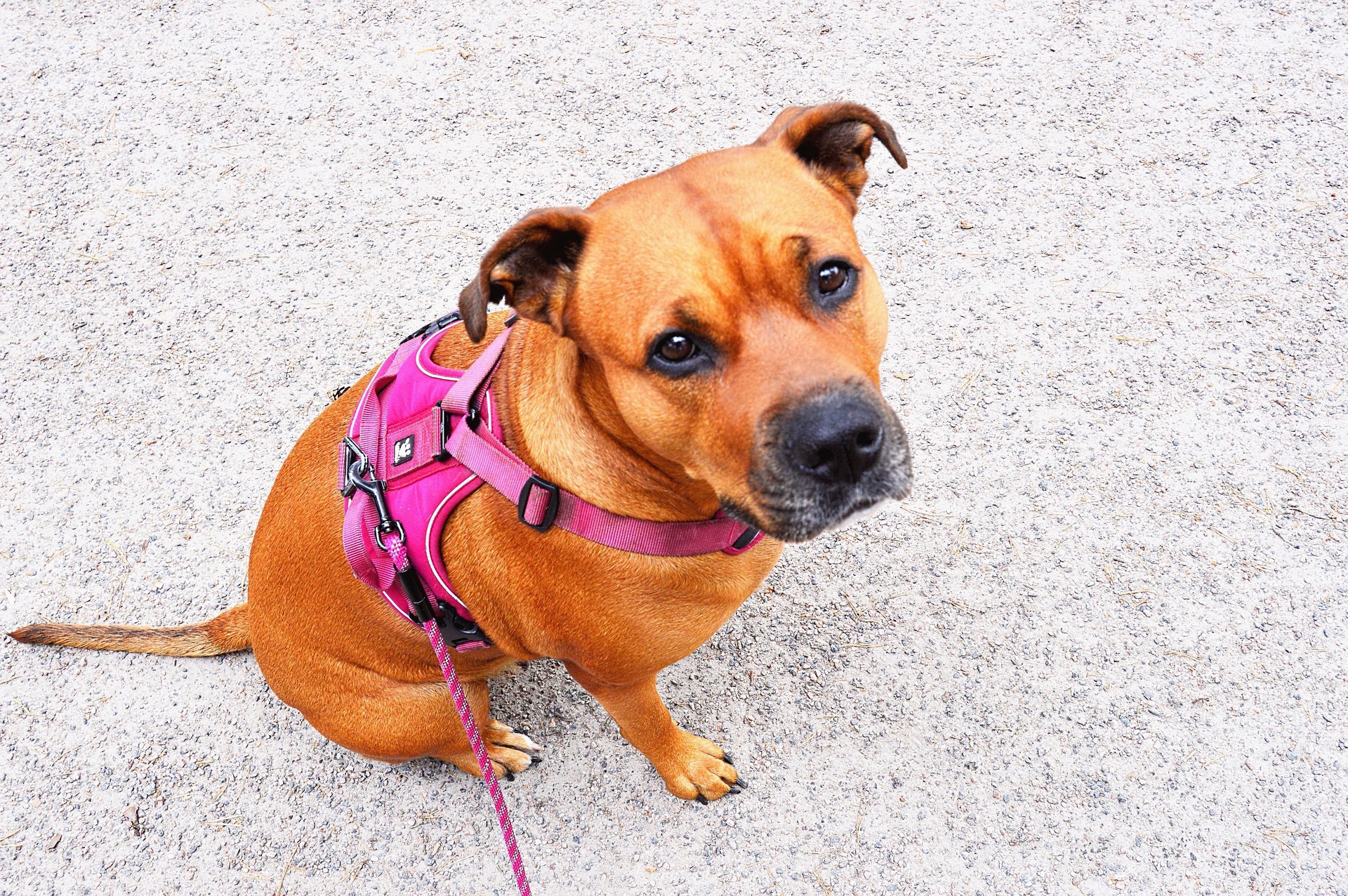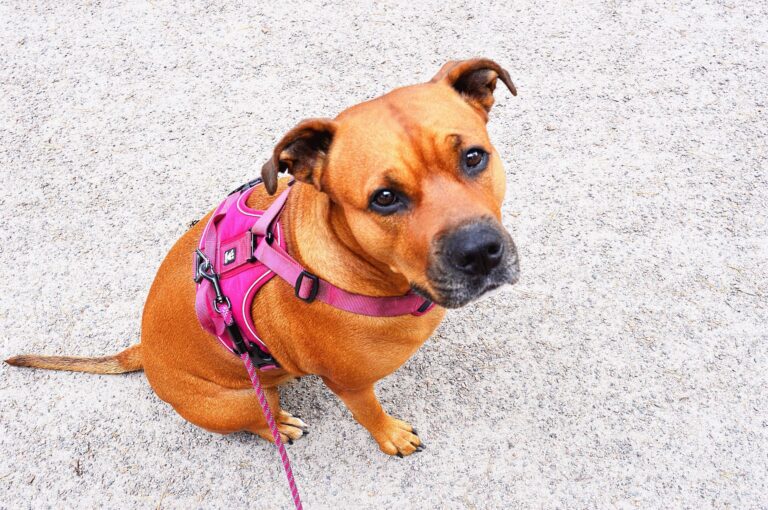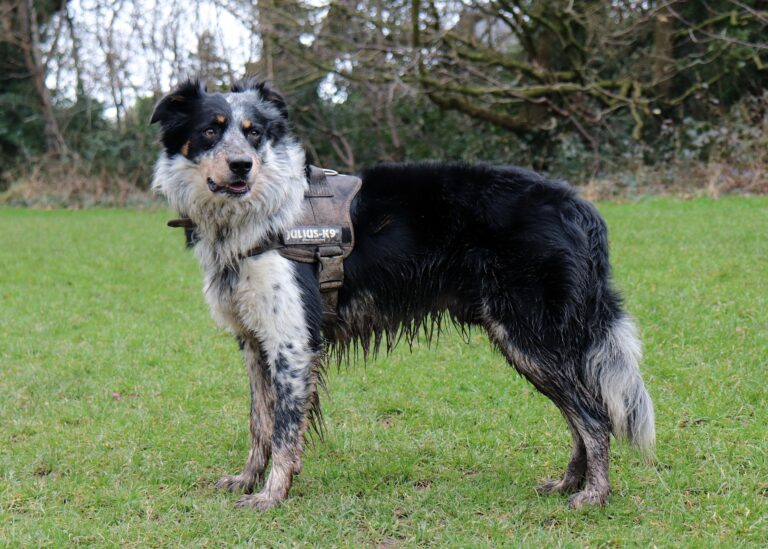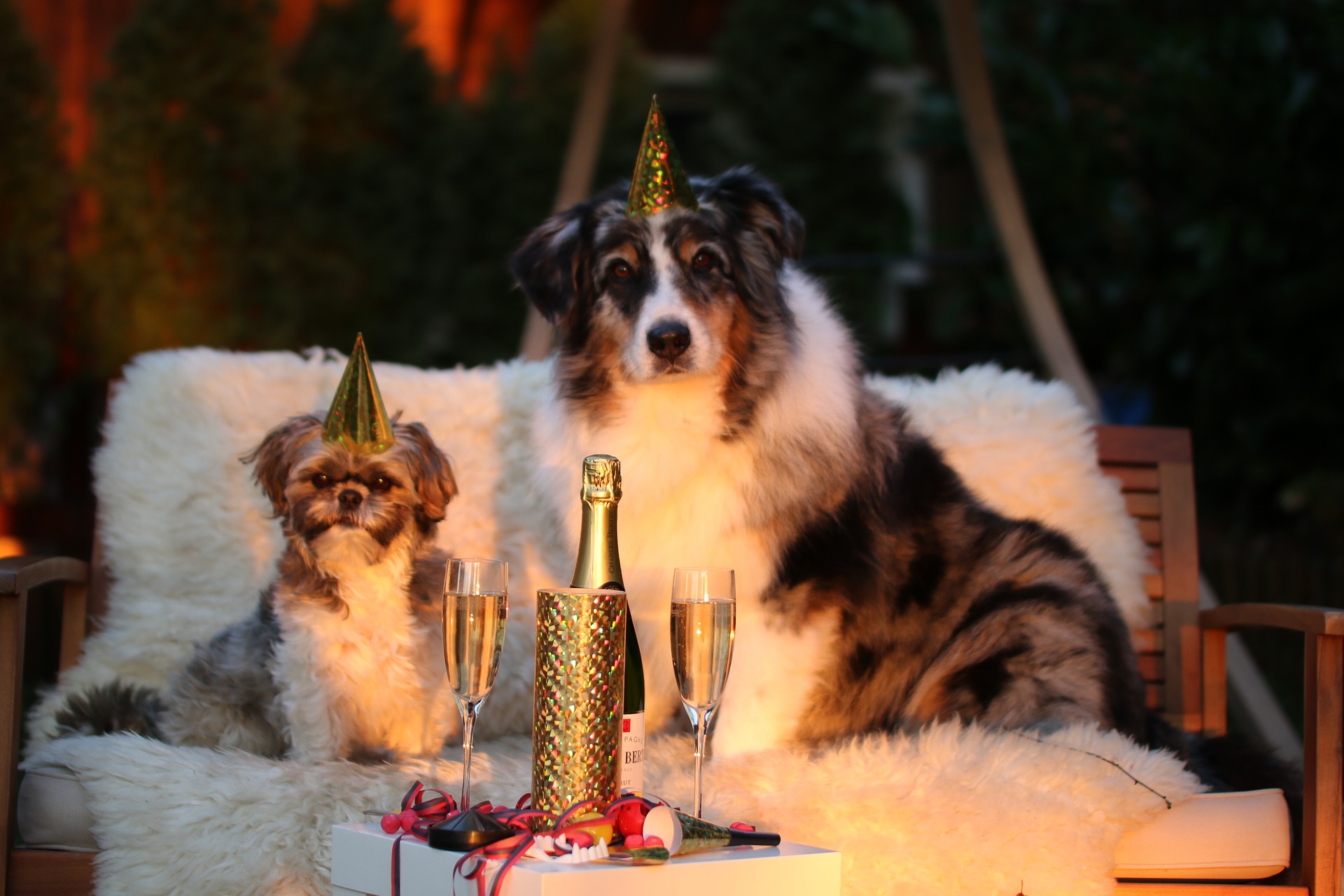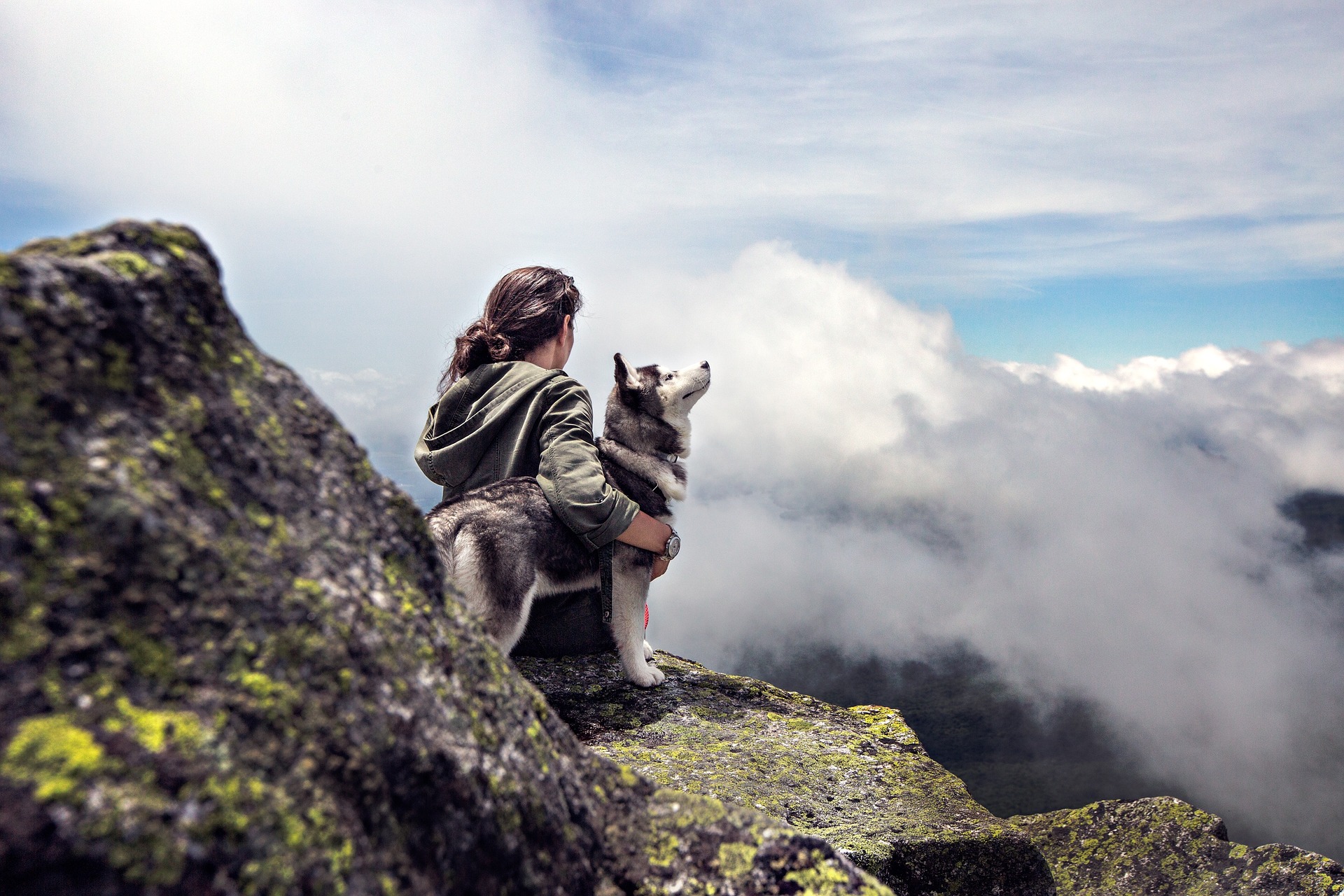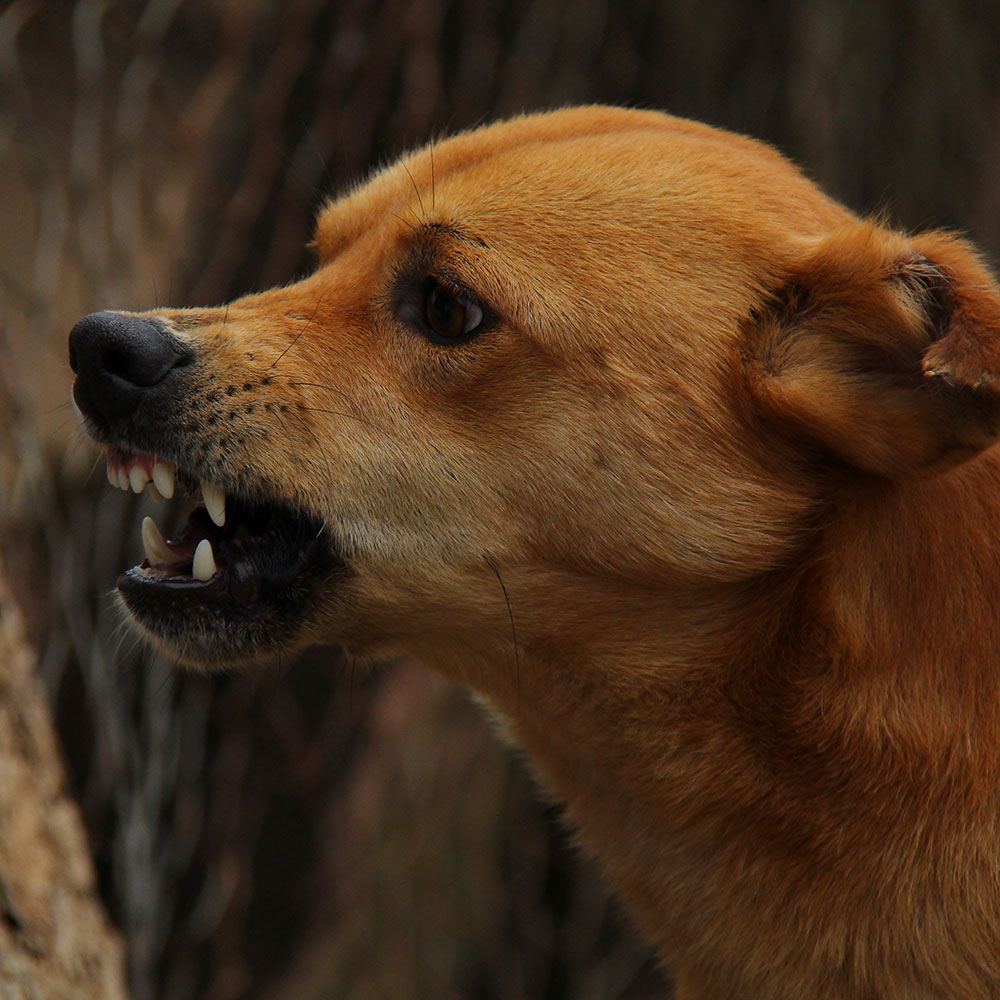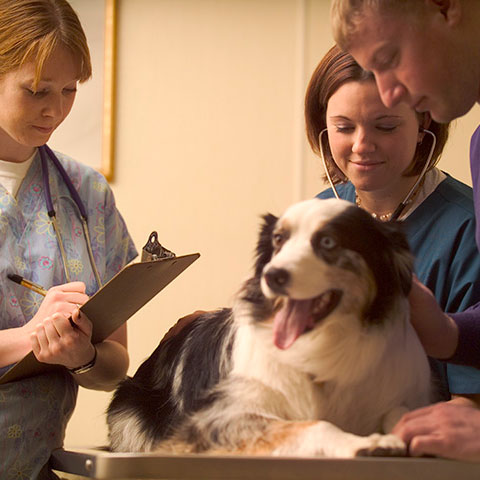1. Go on a new adventure!
Humans are creatures of habit but dogs LOVE to explore. Why not make time for you and your dog to get out and about to some new walking locations? Some of our favourite Edinburgh dog walks are Blackford Hill, Lauriston Castle, Portobello beach and the Water of Leith. If you’re stuck with what’s within walking distance of you, try mixing up your routes, or explore paths you’ve not been down before. Research also shows that going to new places can help combat stress, boost happiness and increase resilience in humans too!
2. Teach your dog a brain game
Despite what people might say, you absolutely can teach a dog of any age new tricks. The challenge of learning new games with your dog will increase your bond and give them a mental work out. We love the shell game as all you need is three containers and some tasty treats and you’ll soon be impressing family and friends! There’s plenty of brain games on the internet though, and in fact, a whole book of ideas if you get stuck!
3. Yup, dogs need diets too
Or more correctly, dogs need us to be “on it” in making sure we’re feeding them the best we can manage, and in the right amounts! Breed, age, size and exercise levels all influence what kind of diet will best suit your furry friend. For many owners, cost is an important factor too. Luckily, the website www.allaboutdogfood.co.uk is on hand to allow you to compare all these factors and more to find the food that is right for your dog. You may also what to discuss options with your veterinarian.
4. Bin that ball chucker (or use it less!)
This one is more of a plea than a suggestion. Whilst it may seem like a great way to exercise your dog, ball chuckers are responsible for creating “adrenaline junkies”, and more and more vets and dog health professionals are recommending they are used sparingly, if at all, to prevent injuries and excessive joint wear and tear. If you don’t want to bin the ball chucker altogether, how about using it to launch treats as part of a challenging game of find it? Have your dog wait for a release cue while you chuck the treats, for the added bonus of teaching impulse control as well as working their brain, nose and body!
5. Be a better communicator
Our relationships are only as good as our ability to communicate, and this is even more important when you don’t share a common language. With terms like “dominance” and “alpha” still firmly in the public imagination, it’s more important than ever we look to science and keep up to date with new developments in our understanding of dogs. Learn more about dog communication through the dog decoder app or silent conversations website, or check out this brilliant Canine Body Language book to get a better insight into what your dog is trying to say.
6. Start a teeth cleaning routine
Believe me, this is largely for your benefit as an owner, since many insurance companies do not cover dental and almost all dogs will need at least one (expensive) procedure in a life time. All you need is 2 minutes, 3 times per week, and with patience and understanding you can work up to cleaning your dog’s teeth. Start with a small amount of enzymatic tooth paste on your finger and let your dog lick it off. Repeat each time, allowing your dog to become familiar and comfortable before starting to gradually touch the teeth and build up to handling the muzzle. As long as you don’t force yourself onto your dog, and allow them to move away when they wish, after a few months you should have a dog that enjoys this process and will start to tolerate a doggy tooth brush as well.
7. Check your equipment
Take 5 minutes to check your dog’s collar, lead, harness etc for wear and tear, and most of all for fit. If you’ve ever had shoes that rub or clothing that is too tight, then you will sympathise with the importance of making sure our dog’s equipment fits comfortably. We recommended harnesses rather than collars for walking dogs on lead, as restricting airflow can cause stress and if your dog is a strong puller they can easily damage the delicate apparatus inside the neck (more vet bills!). Perfect fit and ruffwear make excellent harness that are comfy and secure, and last a long time.
8. Rotate that toy box
If you’re anything like us, your dog’s toy box probably resembles an archaeological record of toy eras, with the most recently played with at the top and a long forgotten, overdue-for-a-wash kong at the bottom (or if you have a collie, severally layers of balls). Tip it all out on the floor! See what your dog chooses and mix things up a little. You can also put toys away from time to time (even the favourite ones, actually, especially the favourite ones!) and bring them out at a later date to keep things fresh and interesting!
9. Address that bad habit
We all have them, dogs included. Whether it is dribbly staring at you while you eat, jumping up when you get home, or running off when they see someone more exciting than you on a walk (or just anyone who isn’t you on a walk), I will be surprised if your dog doesn’t have any! Very few problems fix themselves, so why not get proactive and come up with a training plan? A brilliant pro tip is rather than telling your dog NOT to do something, train them to do something that isn’t compatible with the bad habit, using loads of fun and treats to reinforce the preferred behaviour. Targeting your hand or going to a mat are great examples, and with enough practice, slowly increase the levels of distraction, you can make sure this is your dog’s number one favourite thing to do!
10. Make sure your details are up to date
Last but most important, take 10 minutes this week to check your dog’s microchip details are up to date and that they are in fact registered on a database. Shockingly, a large proportion of dogs found straying each year are chipped but the chip implanter failed to register the details with the microchip company. All that a finder will know in such a case, is that your dog is chipped and where it was chipped. They will not be able to reunite your dog, and you may struggle to even prove the dog is yours if it ends up in the wrong hands. Scary no? Indentibase and Petlog are the two main chip database in the UK, you can call Identibase on 01904 487600 and Petlog on 01296 336579, or check your chip registration through their websites.
We hope these ideas have inspired you, we’d love to find out more about your doggies resolutions on our facebook - https://www.facebook.com/edinburghdogbehaviour/
Wishing you all heaps of love, wiggles, games and adventures in 2019!
